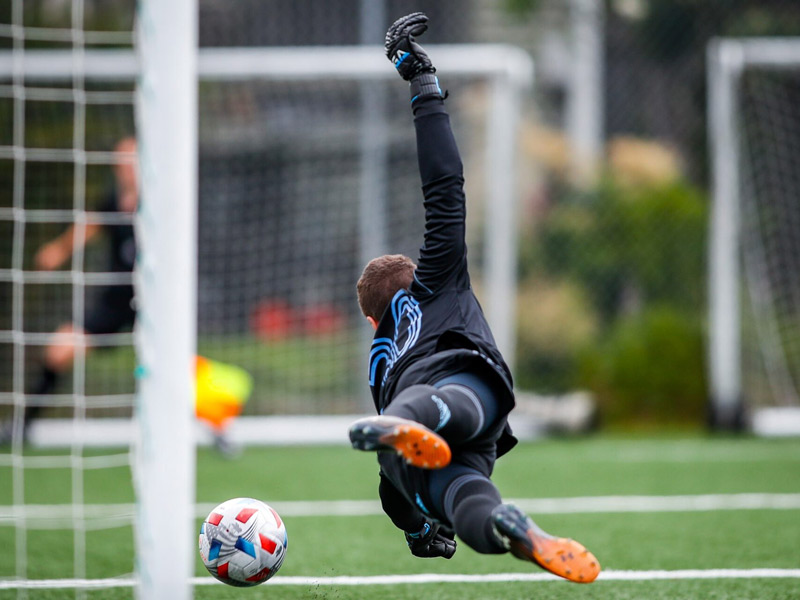In the rapidly changing world of football, the distinction between victory and failure often hinges on the ability to modify strategies in response to changing conditions. Coaches and analysts often face the task of rethinking their game plans, whether due to the appearance of new rivals, shifts in player form, or tactical innovations within the sport. As teams compete for control on the field, understanding when and how revamping tactics becomes crucial in keeping competitive advantage.
Football analysis plays a key role in this journey, offering insights that can inform decisions at all tiers of competition. By analyzing past performances, analyzing player statistics, and interpreting opponent tendencies, teams can spot key areas for enhancement. This analytical approach allows coaching staff to pivot and refine their strategies, guaranteeing they remain adaptable to the dynamic nature of the game. In a sport where every moment counts, understanding when to reassess the game plan can make a significant impact between triumphing and losing.
Present Developments in Soccer Tactics
Soccer strategies have evolved substantially in the past years, driven by advancements in sports science, and the aspiration for teams to gain performance advantages. Current teams are increasingly utilizing dynamic formations that emphasize positional interchangeability. This means players are not exclusively confined to their traditional roles, allowing for active play and unforeseen strategies during games. Coaches are targeting on creating systems that allow for quick transitions and take advantage of spaces that competitors leave open.
An additional key trend is the emphasis on high pressing and high-energy defensive tactics. Teams are now often prepared to press high up the field to recover the possession quickly, often hampering opponents’ build-up play. This strategy requires players to maintain high degrees of endurance and synchronicity, as well as an understanding of collective defensive actions. Additionally, with teams becoming adept at countering high presses, the need for rapid recovery runs and placement has become critical in modern soccer.

Furthermore, the use of data assessment has changed how teams approach their strategies. Coaches are more relying on performance metrics to shape their playing plans and make instant decisions during games. This evidence-based approach enables for personalized training programs and a deeper understanding of the strengths and weaknesses of both their own lineup and their rivals. As a outcome, football analysis has become an integral component in the strategic evolution of the game, shaping how teams plan and execute their playing plans on the pitch.
Identifying Indicators for Transformation
A effective football team must continue flexible to the constantly changing landscape of the game. One of the clearest signs that a game plan requires be rethought is when consistent trends of struggle emerge. If a team consistently fails against specific tactics or athlete types, it suggests that the current approach may be ineffective. Coaches should closely analyze the latest match outcomes to identify these persistent issues and think about making adjustments to recover strategic edge.
Another clue for change comes from player feedback and performance disparities. When crucial players voice frustrations about their roles or the setup, it is important for coaches to take those feedback seriously. Furthermore, if specific players repeatedly fail to meet expectations or lack motivation, it may suggest that the tactical method is not aligned with their strengths. Open discussion within the team allows for a better comprehension of individual skills and can inform tactical shifts that play to the squad’s strengths.
In conclusion, external factors such as rival trends and athlete injuries can heavily influence the necessity for change. If competing teams are capably employing new strategies that counter your approach, it may be sensible to reassess your own game plan. Moreover, injuries can create voids in the roster that demand different tactical formations to maintain stability and success. Responding to these surrounding factors not only helps in immediate resolution but also sets the stage for lasting success in football analysis.
Implementing Innovative Strategies
The approach of adopting new tactics in soccer necessitates a comprehensive understanding of both the strengths and challenges of the players involved. Coaches need to evaluate the players’ individual abilities and how they can be most effectively leveraged within a updated game framework. This examination extends further than mere statistics; it includes assessing player well-being, psychological state, and team dynamics. Effective dissemination of these innovative plans is essential to make certain that each and every player is on the same wavelength and understands their part in attaining overall team objectives.
Once a tactic is set, it is necessary to carry out test runs during training sessions. These practice environments provide an platform for athletes to get accustomed with the updated strategies and make appropriate changes in actual practice. Coaches should promote open communication from athletes, fostering a culture where concerns and contributions are accepted. This collaboration not only enhances team solidarity but also motivates team members to take responsibility of the game approach, thereby boosting the likelihood of efficient execution in actual games.
Finally, monitoring the effectiveness of the newly plans is paramount. Coaches should apply a mix of statistical and descriptive evaluation to evaluate the results of matches under the new game plan. ทีเด็ดบอล This involves revisiting game videos, evaluating rivals, and adjusting plans as needed based on observed performance. Continuous evaluation ensures that the approach remains dynamic and changeable, permitting teams to respond to evolving circumstances on and off the field.
